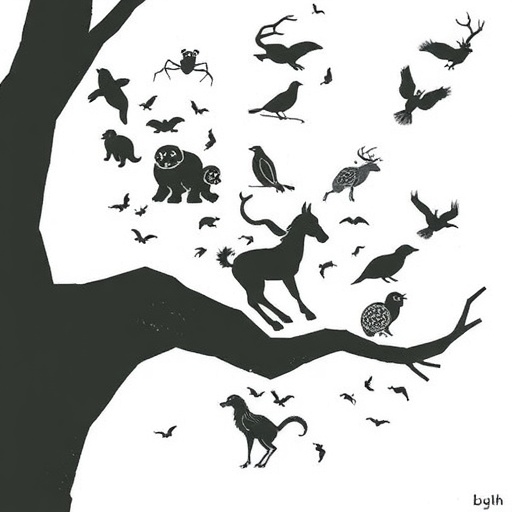A groundbreaking study spearheaded by researchers at the University of Waterloo has unveiled complex interconnections between illegal wildlife trade and other forms of organized criminal activities, including arms dealing, drug trafficking, and human smuggling. This investigation meticulously maps the overlapping networks that sustain these illicit trades, revealing that efforts to curb wildlife trafficking cannot be effective in isolation but must address the multifaceted crime ecosystems that fuel them.
The illegal wildlife trade, a multi-billion-dollar global industry, is traditionally viewed through an environmental lens—as a threat to biodiversity and conservation efforts. However, this new research reframes the issue as an intricate criminal phenomenon with profound implications for public health, human security, and law enforcement worldwide. By untangling these convergent crimes, the study highlights the need for holistic interventions targeting the criminal entities orchestrating these activities rather than focusing exclusively on street-level offenders.
Central to the study is the innovative methodology employed, which blends extensive data collection with privileged insights from law enforcement agencies and intelligence experts. Often constrained by confidentiality when sharing operational details publicly, these insiders provided nuanced perspectives that enabled the researchers to paint a comprehensive picture of how wildlife trafficking intertwines with other illicit trades in various geopolitical contexts. This approach enhances understanding of criminal networks’ structural dynamics, informing more strategic disruption efforts.
South Africa and Hong Kong are well-documented hotspots for wildlife trafficking, serving as key nodes in the circulation of illegal animal and plant products. The study also spotlights Canada, challenging preconceptions about the geographic scope of wildlife crime. Contrary to popular belief, Canada experiences significant illegal wildlife trade activities across its vast territory, underscoring that high-income countries are not exempt from this complex criminal web. This revelation demands increased vigilance and policy attention in regions previously considered peripheral to such crimes.
One of the study’s pivotal insights concerns the role of financial flows underpinning these illicit operations. The researchers emphasize the potential of anti-money laundering (AML) strategies as a critical tool in countering wildlife trafficking. By tracing the monetary trails, enforcement agencies can identify and target high-level figures profiting from wildlife exploitation rather than expending limited resources on low-tier offenders. This pivot towards financial investigation represents a sophisticated evolution in combating environmental crime.
Dr. Michelle Anagnostou, the lead author and now a Banting Postdoctoral Fellow at the University of Oxford, notes that integrating criminal intelligence across domains can reveal vulnerabilities in these intertwined networks. She emphasizes that addressing wildlife trafficking solely as an environmental issue overlooks its broader societal impacts, including threats to public health from zoonotic diseases and the destabilization of communities through criminal governance mechanisms.
The research further stresses that tackling such a deeply entrenched and globalized problem necessitates international cooperation and data-sharing among jurisdictions. Indeed, the tri-national focus of South Africa, Hong Kong, and Canada exemplifies differing yet connected contexts where illegal wildlife trade flourishes. Each region’s criminal networks exhibit unique patterns, but all share common traits of convergence with other forms of transnational crime, from illegal arms shipments to narcotics distribution.
While the environmental consequences of wildlife trafficking—such as biodiversity loss, extinction of endangered species, and ecosystem destabilization—remain severe, this study expands the discourse to include socioeconomic dimensions. Legal and illegal economies become entangled, with criminal syndicates leveraging wildlife crime for profit and influence, further exacerbating challenges to sustainable natural resource management and conservation ecology.
Another scientific contribution of this research lies in its methodological innovations, combining forensic analysis with environmental methods to dissect these complex networks. Such integrative analyses enable researchers and law enforcement to reconstruct crime pathways with unprecedented clarity, offering actionable intelligence for tailored policy responses. The incorporation of advanced criminological theories and economic modeling deepens the understanding of how wildlife trafficking operates as a multilayered illicit economy.
Looking ahead, the research team plans to deepen their investigation into the efficacy of AML mechanisms within the Canadian context, aiming to disrupt financial incentives that sustain wildlife trafficking networks. Emphasizing the “follow the money” principle, these interventions promise to shift the paradigm from reactive enforcement to strategic incapacitation of criminal leadership structures. This financially informed approach may serve as a blueprint for global strategies targeting environmental crime syndicates.
The significance of this study transcends academic discourse, providing empirically grounded insights that can inform international policy frameworks and enforcement protocols. Dr. Brent Doberstein, Dr. Anagnostou’s doctoral supervisor, highlights the practical implications of this research, stressing its capacity to guide the design of interventions that address the complexity of wildlife crime more effectively, ultimately contributing to biodiversity conservation and public safety.
In sum, this study represents a major advance in the evolving understanding of illegal wildlife trade as an integrated component of broader organized crime. Its interdisciplinary approach, combining ecology, criminology, economics, and intelligence analysis, offers a compelling case for reconfiguring global anti-trafficking efforts. Only by acknowledging and dismantling the criminal networks in their entirety can meaningful progress be achieved against this multifaceted threat.
Subject of Research: Not applicable
Article Title: Disentangling and demystifying converging crimes and illegal wildlife trade in South Africa, Hong Kong, and Canada
News Publication Date: 8-Oct-2025
Web References: https://www.sciencedirect.com/science/article/pii/S2949791425000727?via%3Dihub
References: 10.1016/j.jeconc.2025.100196
Image Credits: Dr. Michelle Anagnostou/University of Waterloo
Keywords: Conservation biology, Biodiversity conservation, Endangered species, Extinction, Natural resources management, Conservation ecology, Wildlife management, Sustainability, Wildlife refuges, Environmental methods, Forensic analysis, Crime




